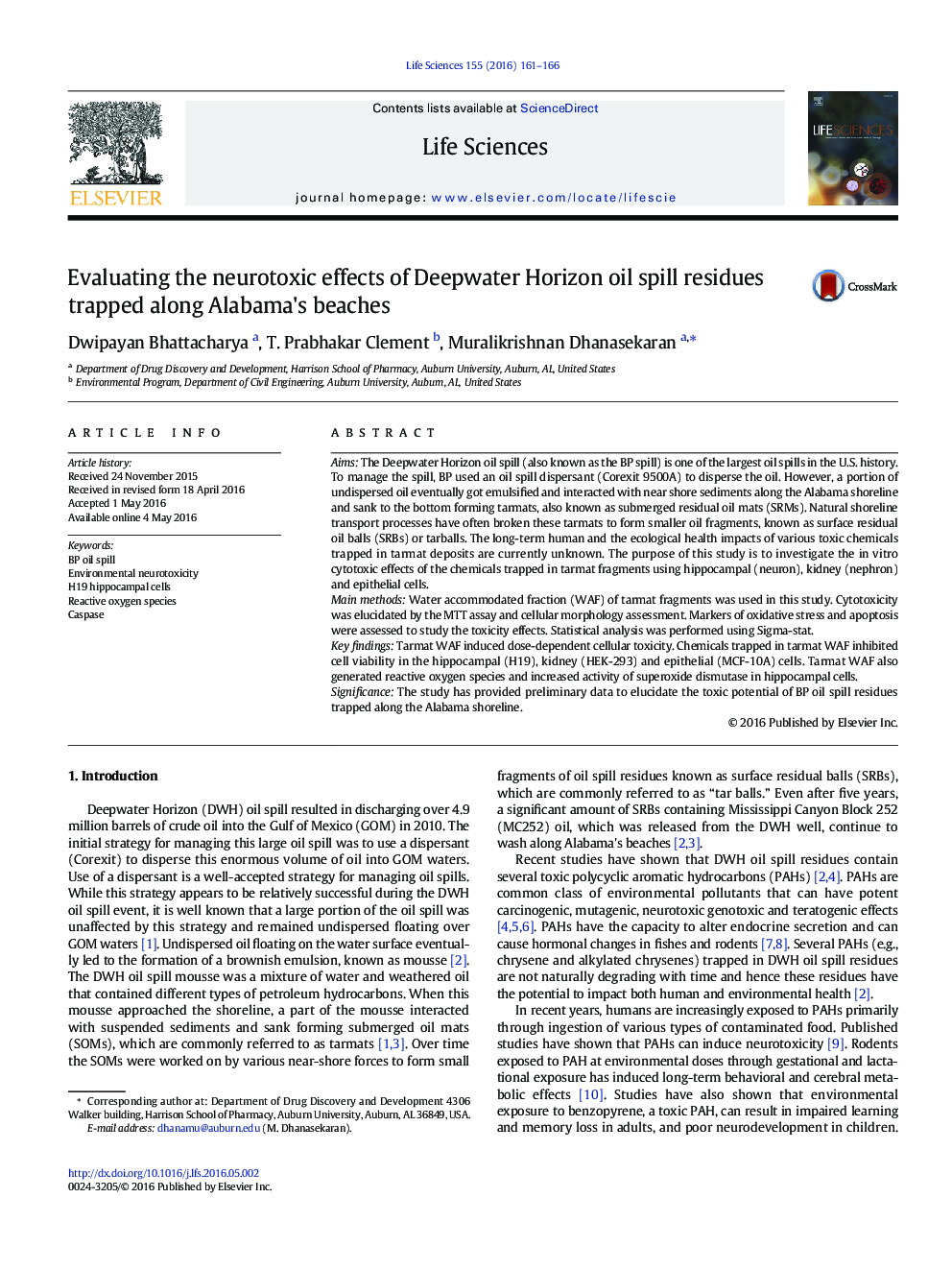| Article ID | Journal | Published Year | Pages | File Type |
|---|---|---|---|---|
| 2550538 | Life Sciences | 2016 | 6 Pages |
AimsThe Deepwater Horizon oil spill (also known as the BP spill) is one of the largest oil spills in the U.S. history. To manage the spill, BP used an oil spill dispersant (Corexit 9500A) to disperse the oil. However, a portion of undispersed oil eventually got emulsified and interacted with near shore sediments along the Alabama shoreline and sank to the bottom forming tarmats, also known as submerged residual oil mats (SRMs). Natural shoreline transport processes have often broken these tarmats to form smaller oil fragments, known as surface residual oil balls (SRBs) or tarballs. The long-term human and the ecological health impacts of various toxic chemicals trapped in tarmat deposits are currently unknown. The purpose of this study is to investigate the in vitro cytotoxic effects of the chemicals trapped in tarmat fragments using hippocampal (neuron), kidney (nephron) and epithelial cells.Main methodsWater accommodated fraction (WAF) of tarmat fragments was used in this study. Cytotoxicity was elucidated by the MTT assay and cellular morphology assessment. Markers of oxidative stress and apoptosis were assessed to study the toxicity effects. Statistical analysis was performed using Sigma-stat.Key findingsTarmat WAF induced dose-dependent cellular toxicity. Chemicals trapped in tarmat WAF inhibited cell viability in the hippocampal (H19), kidney (HEK-293) and epithelial (MCF-10A) cells. Tarmat WAF also generated reactive oxygen species and increased activity of superoxide dismutase in hippocampal cells.SignificanceThe study has provided preliminary data to elucidate the toxic potential of BP oil spill residues trapped along the Alabama shoreline.
